Crazy Man Michael - Interview
by John Clarkson
published: 11 / 1 / 2009
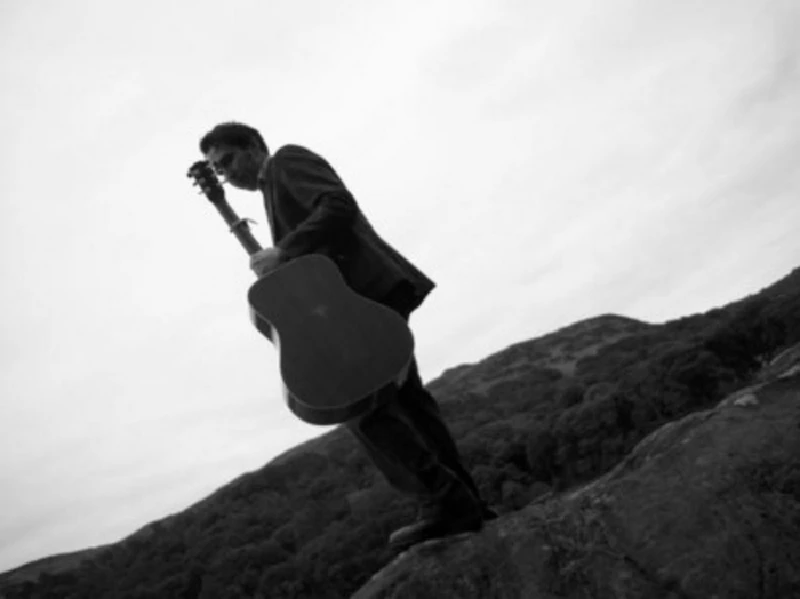
intro
A member of Last Harbour and Anna Kashfi, Mancurian musician Michael Dorward has just released his own album, the 60s folk-tinged 'The Green Light', under the moniker of Crazy Man Michael. He talks to Malcolm Carter about its making and balancing the different strands of his busy musical career
Pennyblackmusic has already conducted a number of interviews with bands who are part of the Little Red Rabbit Collective so Michael Doward’s name will be familiar to regular readers and to those who have followed the progress of the Little Red Rabbit Collective bands we have featured like Anna Kashfi and Last Harbour. Now Michael Doward has found the time to release his own album under the moniker of Crazy Man Michael, which considering he plays bass for the above named bands as well as for Samson and Delilah it’s not surprising that it has taken a couple of years to complete. Naming this project after a Fairport Convention song gives a strong clue as to where Michael wanted to go with the sound on his album. ‘The Green Light’ is a departure from the sound of the bands Michael helps to create with his label-mates. With one eye(and ear) set firmly on the sounds emanating from the folk clubs of the 1960s and the other putting those sounds in a contemporary setting, while not really bothering what is termed nu-folk or weird-folk, Michael forges a sound that is more uplifting and optimistic than either his song titles or cover art would suggest. While still playing the bass on the nine songs that make up ‘The Green Light’ Michael also handles acoustic and electric guitars, ukulele, mandolin, piano and percussion so for many of us it is the first time we have had the opportunity to hear him take on other instruments. ‘The Green Light’ is almost entirely acoustic but Crazy Man Michael creates a full, rich sound and coupled with Michael Doward’s emotive vocals and string arrangements by David Christensen it’s unlike any other album yet released by Little Red Rabbit Records. Pennyblackmusic took the opportunity to ask Michael Doward a few questions about how the album took shape and the story behind that intriguing cover. PB : You also play with Anna Kashfi and Last Harbour. Why start a separate unit as Crazy Man Michael. Why not just take these songs to one of the projects you are already a member of? MD : Mainly because those projects have their own songwriters and lyricists - although I have a lot of musical say in what I do. For my own songs I wanted to be able to realise my own vision. Also, I write songs in quite a different musical vein to the ones by the other bands despite our having a fairly strong shared aesthetic and a large overlap in our musical tastes. I'm basically a control freak when it comes to my own music. PB : All the songs on ‘The Green Light' are composed by you. But various members of Last Harbour and Anna Kashfi play on the album. You are all part of the Little Red Collective but as the composer of the songs, if there are more recordings made, are you going to use the same musicians or will you be the only permanent member of Crazy Man Michael ? MD : In fact James Youngjohns is the only other musician who overlaps from those two bands and he only added the very atmospheric viola and harmonium to 'Night's Journey'. The other Manchester based members of Last Harbour helped out more with the album production - James again on the mixing, Last Harbour's guitarist David Armes put endless hard work into getting the album in the shops and in the press and their singer Kevin Craig designed and did the artwork. They all deserve more thanks than I can express for what they gave to the album. It wasn't intentional that way at all. It just happened that I started recording the songs on my own at home, more to see if I could do it than with any plan for it to be released and at the point where it needed fleshing and filling out Sam Lench and Anna Zweck from Samson and Delilah were on hand to provide what was needed - apart from the more specialised musical expertise needed for David Christensen's arrangements. I wouldn't hesitate to use anyone from any of the bands I'm involved with when recording the next batch of songs. In fact I'd love it to be a bit more colaborative but it just depends whose on hand and what's needed at the time. I am Crazy Man Michael and therefore the only permenant member, the control freak in me again. PB : Are you planning to tour the album and, if so, will the same musicians who played on the album back you on tour ? MD : I'm certainly hoping to be much more active in a live capacity this year. So far the backing at gigs has mainly been provided by the other members of Samson and Delilah - mainly Sam and Anna but also Tom Ryyard and Tammy Hermann on occasion. The album launch gig was a wonderful affair and I managed to draft in a dozen other musicians for that event, meaning I could do quite faithful arrangements of the songs on the night. I'd love to play with that size of band again but the logistics of live playing rarely allow it. The one thing I would like on a more permenant live basis is a double bassist as, unfortunately, I can't sing, play guitar and double bass at the same time. I need more arms. PB : The cover of the album is eerily dark and gloomy but also intriguing. ‘The Green Light’ reflected on the water is the only optimistic sign in the image. What’s the story behind the picture? PB : All of the albums artwork and design was done by Kevin Craig who, as well as being Last Harbour's vocalist, is a hugely gifted writer, film maker and artist. I'd really liked the artwork he'd done previously for Last Harbour and Anna Kashfi and so he was the obvious choice for the album artwork. MD : The front cover picture is inspired, as the albums title itself is, by F. Scott Fitzgerald's 'The Great Gatsby' : The concept of the green light at the end of Daisy's dock that is the focus for all of Gatsby's (in his case ultimately futile and fatal) hope and dreams. Indeed, I would have quoted a large chunk of the last page of that novel on the sleeve notes but there were copyright issues and I didn't have time to explore obtaining permission so I left that off. Kev and I discussed in great length our ideas for the sleeve and he went away and came up with some stunning artwork. Also the Twenties film credits inspired inner sleeve was another thing he realised just exactly as I had envisaged it. PB : I was expecting, as many others were I guess, something of a depressing ride when listening to the nine songs on ‘The Green Light’ due to the cover and song titles like ‘Doomed Youth’s Blues’ and ‘Winter Song’. But I found it to be a very uplifting collection of songs. The instrumentation and strings really add lightness to the songs. Was it deliberate to house the songs in a cover at odds with the sounds within ? MD : Yes, there is a strong current of optimism and hope in the songs both lyrically and musically and I think that comes through strongly in the artwork too. Actually, 'Doomed Youth' doesn't have any hope or optimism in it, that one is just depressing. The songs all came out of a very emotionally difficult and tumultuous time in my life and were one of my coping mechanisms at that point. I think the lightness that comes out in the lyrics and instrumentation was my way of persuading myself that everything would, somehow, be okay again - not just my naturally sunny disposition. Again, that is reflected in the artwork. Kev understood the dark undercurrents that pervade the songs and I think he did a wonderful job in bringing those out but I do think, in the form of the Green Light and the colouration of the background that suggests dawn (albeit a rainy dawn) is just around the corner, that he also brings out the optimism beautifully as well. I should just note here that the pictures were all cut out by hand from a single sheet of paper using very small scalpels before being scanned and coloured on his Mac. Quite breathtaking. PB : Being a part of the Little Red Rabbit Collective and playing with those bands and now fronting Crazy Man Michael…which gives you more satisfaction musically ? If, due to time limitations, you had to spend less time on one of the projects would it be a difficult decision to decide which one? MD : Absolutely! I get so much from all the different projects I'm involved in and dearly love all the people I make music with that I wouldn't want to have to choose! Fortunately, the various bands tend to have changing levels of involvment which, so far, have been at different points in time, so it's never been something I've had to consider. I would find it dreadfully difficult to do. PB : The album has been a couple of years in the making. Were the songs complete when you started the recording or have you built them up during this period ? MD : No, the songs were written over the same period of time as the album. Indeed, the original idea was for 'The Green Ligh't to be a mini album of just six songs but I wrote and recorded four new songs in a few months before the deadline for releasing the album last year. One of them didn't quite work out in time for this release and I'm sure I'll revisit it but the other three - 'Halcyon', 'A Guiding Light' and 'Night's Journey' - came together very quickly and are some of the tracks I'm most proud of on the album. The recording and mixing went right to the wire and in fact was only completed a week after the album should have gone for mastering! PB : ‘Night’s Journey’ is the less immediate song on ‘The Green Light’ but in some ways is more representative of the sound expected by the design of the album and the name of the band. It reminds me of a lot of older ‘folk’ songs while still sounding contemporary. There is definitely a different ‘feel’ to that song than the others and in time it will probably be the one song that people hold up as the highpoint of your album. Does that song point the way for future recordings? MD : It was partly a concious decision to use a slightly more traditionally folk mode and came about after listening to a lot of Bert Jansch and Pentangle. The tune developed from my attempting to learn a traditional song called 'The Loathsome Worm and the Mackerel of the Sea' in a version by the English folk artist James Reynard - although all that really remains of that is the drop D tuning. The lyrics are certainly in a more folk style than any of the others with some old English affectations. I'm not sure if it indicates a new direction particularly - the songs tend to evolve over a period of time and that just happened to be where I was at that time. There does seem, however, to be a gradual evolution in my songwriting and new songs tend to be informed by what has gone before so I've no doubt that some of the ideas used in 'Night's Journey' will resurface in different form in future songs. PB : You play a number of instruments on ‘The Green Light’. Are you self-taught on any of them ? Which is your instrument of choice, the one you get most enjoyment out of playing ? MD : The acoustic guitar, purely because it is the most flexible instrument and therefore my primary tool for songwriting. My other instruments I enjoy in their own way in the different contexts in which I play them. I am having a lot of fun with the ukulele at the moment. I, and I'm sure many of my friends, wouldn't be suprised if that was a lot more prominent on the next batch of recordings! The only one I've had any formal teaching on as an adult is the double bass as I didn't want to get into any bad habits on that one. PB : The combination of instruments such as ukulele, harmonium and mandolin coupled with the beautiful string arrangements overshadow your lyrics. Your vocals and lyrics are both excellent but ‘The Green Light’ could have been a totally instrumental album and still shone. It’s one thing to go into the studio with the melody and words worked out but how much of the arrangements of these songs did you have planned before you taped them ? The songs sound so complete, so perfect, that one pictures you pouring over each and every sound in the studio in that search for perfection. The trumpet on ‘Falling’ for example lifts the song. Was that worked out in the studio ? MD : I wouldn't say they overshadow the lyrics, I feel they complement each other very well. I don't believe in one particular part of the recording being more important than another. Although the lyrics are deeply personal and mean a very great deal to me, I would be doing them a diservice if I were to ignore the instrumentation or arrangement and not make the entire song as rich and satisfying as possible. Having said that, the only pre-arranged instrumentation was the strings and brass which were written by the marvelous David Christensen, an amazing composer and arranger from Canada. Nearly all the other instruments bar the acoustic guitar and vocals were recorded ad hoc and as seemed apropriate for the songs. Sam and I had one tremendously enjoyable evening recording all the percussion - mainly using a pair of massively detuned timbale, a gong and cymbal I'd borrowed from the music shop I work in. All except 'A Guiding Light' which we forgot about and I had to do alone the next day. 'A Guiding Light' also has my favorite musical moment of the album - Anna's flute part which was done in two takes that worked so well together I used them both and what's there is everything she recorded. Much of the instrumentation was very serendipitous like that. PB : It’s taken a couple of years to get this album released. As it has been so well received are we going to have to wait as long for a follow-up or do you have plans already to record more ? MD : It all depends how long it takes me to write some more songs. I tend to have long fallow periods and than write a few songs in a row. Having said that, I have four new songs part written and the song that didn't make it on to 'The Green Light' to be re-worked. If I could have a second album out for spring 2010 I think I'd be quite pleased with that. PB : Thank you.
Picture Gallery:-
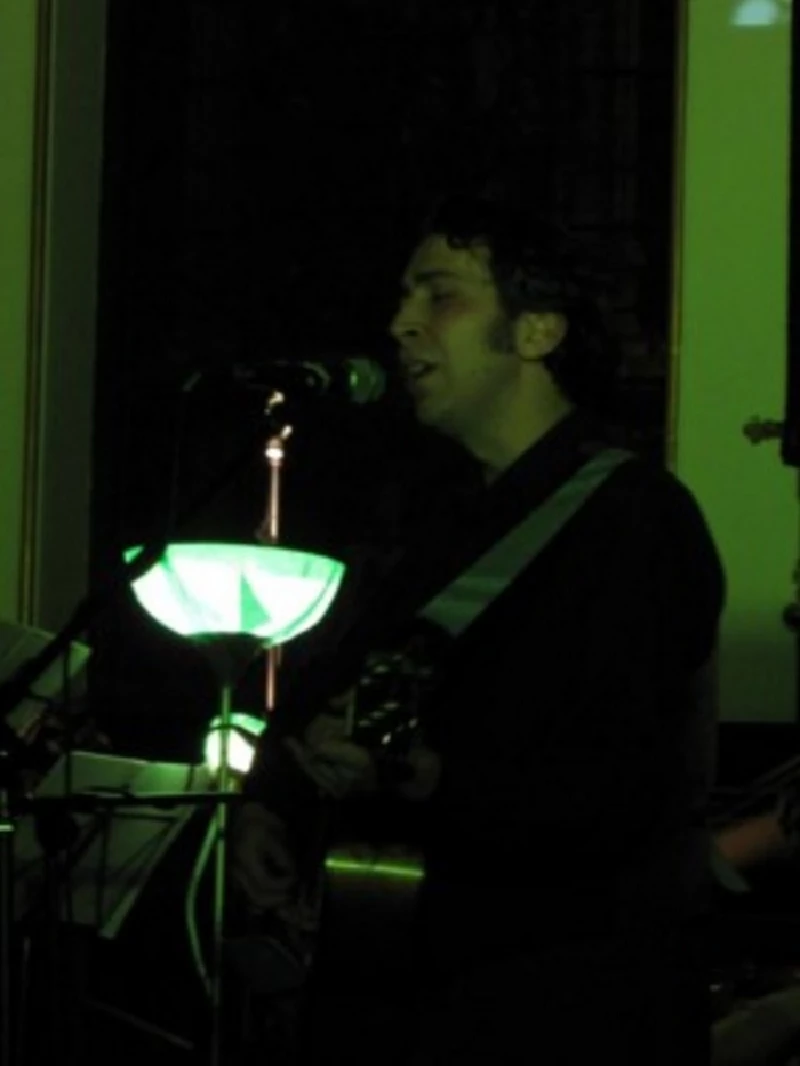
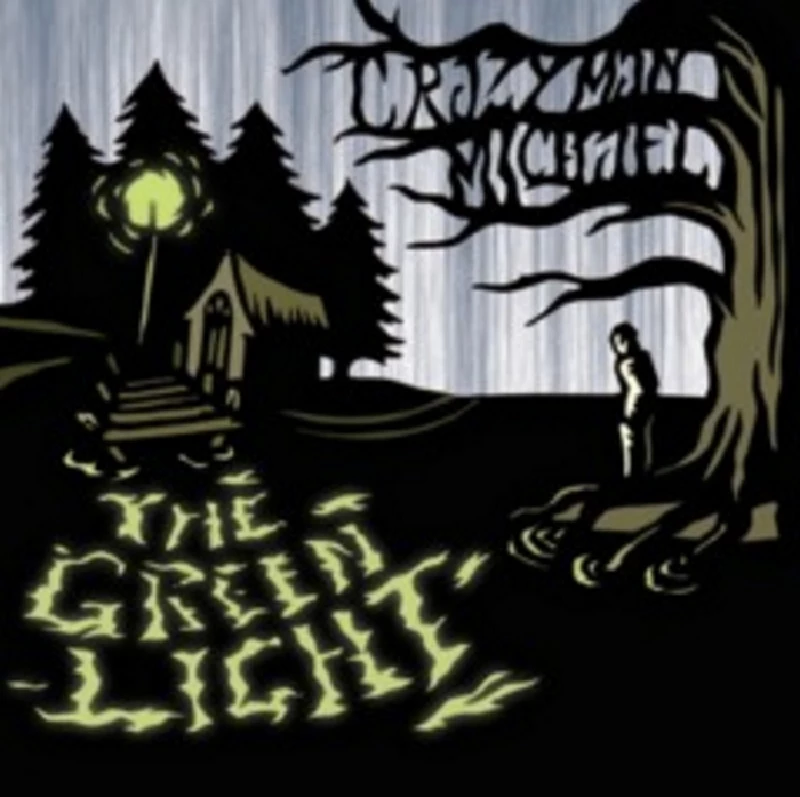
live reviews |
|
Koko, London, 8/2/2012 |
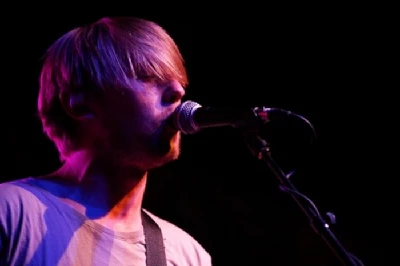
|
| Jamie Rowland is impressed by alternative rock act WATERS' energy and gusto, which is powerful enough to silence the whole crowd, in a support slot to Nada Surf at the KOKO in London |
reviews |
|
The Green Light (2009) |
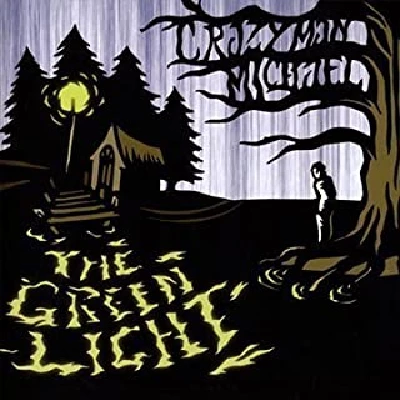
|
| Striking debut album from Crazy Man Michael, the project of Mancurian musician Michael Doward, who has taken his influences from sixties folk groups such as Fairport Convention snd then given them a contemporary sound |
most viewed articles
current edition
Spear Of Destiny - InterviewRobert Forster - Interview
Fiona Hutchings - Interview
When Rivers Meet - Waterfront, Norwich, 29/5/2025
Carl Ewens - David Bowie 1964 to 1982 On Track: Every Album, Every Song
Brian Wilson - Ten Songs That Made Me Love...
Pistol Daisys - Waterfront, Norwich, 29/5/2025
Gary Numan - Berserker
Deb Googe and Cara Tivey - Interview
Roberta Flack - 1937 - 2025
previous editions
Heavenly - P.U.N.K. Girl EPBoomtown Rats - Ten Songs That Made Me Love....
Dwina Gibb - Interview
Trudie Myerscough-Harris - Interview
Oasis - Oasis, Earl's Court, London, 1995
Sound - Interview with Bi Marshall Part 1
Susie Hug - Interview
Chuck Prophet - Ten Songs That Made Me Love...
Ray Humphries - Interview
Sukie Smith - Interview
most viewed reviews
current edition
Peter Doolan - I Am a Tree Rooted to the Spot and a Snake Moves Around Me,in a CircleGarbage - Let All That We Imagine Be The Light
Little Simz - Lotus
Suzanne Vega - Flying With Angels
John McKay - Sixes and #Sevens
Vultures - Liz Kershaw Session 16.06.88
Billy Nomates - Metalhorse
HAIM - I Quit
Vinny Peculiar - Things Too Long Left Unsaid
Morcheeba - Escape The Chaos
Pennyblackmusic Regular Contributors
Adrian Janes
Amanda J. Window
Andrew Twambley
Anthony Dhanendran
Benjamin Howarth
Cila Warncke
Daniel Cressey
Darren Aston
Dastardly
Dave Goodwin
Denzil Watson
Dominic B. Simpson
Eoghan Lyng
Fiona Hutchings
Harry Sherriff
Helen Tipping
Jamie Rowland
John Clarkson
Julie Cruickshank
Kimberly Bright
Lisa Torem
Maarten Schiethart